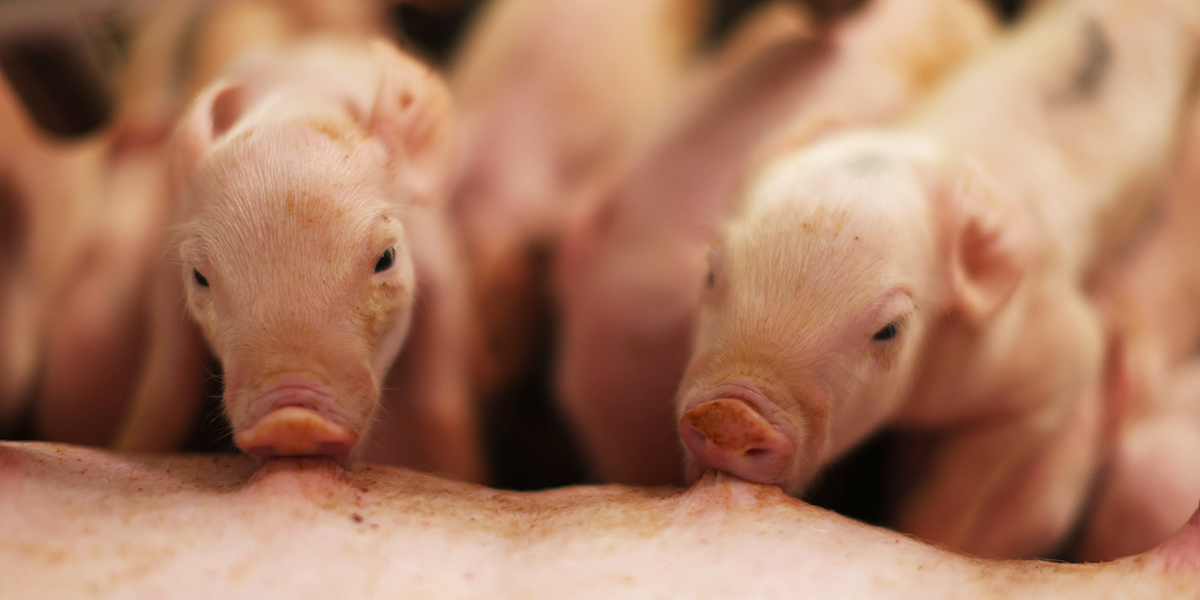The job we are asking our sows to perform is the same today as it was three to five years ago, with the goal to produce larger, heavier litters while staying healthy and productive through multiple parities. This increased productivity expectation and changes in production requirements to suite consumer demands, is creating more biological pressure on sows around the world. The net effect of this pressure can be measured by consistent trendline increases in sow mortality in the world’s key pork-producing regions.
As we continue to learn more about why sow mortality continues to increase, we are discovering that it is from a combination of issues. In the U.S.,
- Around 29% of sows are culled for lameness
- Over 21% of sows are lost to prolapse
- Up to 39% of sows are still lost to unknown reasons
However, this challenge is not just happening in the U.S. Sow mortality is on the rise in Denmark where roughly 30% of sow mortality results from euthanasia due to lameness. In China, around 35.3% of sows are culled due to reproduction disorders.
The True Cost of Sow Mortality
The economic impact of sow mortality is a difficult number to determine. Should you focus on replacement cost only? Or, is calculating the direct cost and opportunity costs a more accurate view? When I’m working with customers, I analyze two types of costs when evaluating sow mortality rates – direct cost and opportunity costs.
Direct Cost
Direct cost is the amount of money a producer will spend to buy and raise a replacement gilt. Let’s work through an example. In this example, a producer has 1,000 sows, and the cost of entering a replacement gilt at the sow farm is $300. A 10% sow mortality rate would incur direct costs of $30,000 per year, or $30 per sow per year. The gestation length of a sow is 114 days, and labor and facility cost is $2 per sow per day. That means that the total direct cost of adding replacements increases to more than $500 per entered female, or $50 per sow.
Learn More: Understanding the Hidden Losses from Sow Replacement
Opportunity Costs
Opportunity costs are harder to quantify because they largely consist of lost or delayed profits. For example, we estimate that every time we lose a sow, up to $1,000 of opportunity cost is lost for each individual mortality event. This can also be viewed as losing the total value of a replacement gilt.
Additionally, progeny from gilts have poorer gain and feed conversion and higher rates of mortality through the wean-to-finish system when compared to progeny from sows. Post weaning, P1 gilts are going to have longer wean-to-service intervals and lower conception rates. Therefore, losing a mature sow and replacing it with a gilt will temporarily lower productivity and profitability, until that gilt matures.
Applicable Solutions to Boost Sow Performance
There are actions you can take to help reduce sow mortality rates and maintain system profitability, including:
- Have a sound gilt selection and development program in place
- Be sure to look at the quality of the gilt, and not so much the quantity
- Ensure a stringent selection criteria
- Use proven nutritional solutions in your gilt development diets
- Practice gilt health acclimation
It is also important to maintain a dependable sow stockmanship and management program. Different ways to measure the effectiveness of this program include:
- Be consistent when identifying at risk sows
- Routinely analyze how group housing requirements are managed
- Ensure that you have the best treatment and sick sow management protocols in place
Proven Nutrition from Zinpro® Can Help Your Sow and Gilt Programs
Nutrition is an efficient and impactful tool you can use to optimize sow robustness. Research has shown that Zinpro® Performance Minerals® can reduce sow mortality by up to 2%, resulting in significant financial returns.
By working together to incorporate the best nutritional solutions for your business, we can help your sows mount a more effective response to challenges. Zinpro Performance Minerals are organic trace minerals with unrivaled post absorptive effects, which help your pigs get optimal nutrition throughout their lifetime, delivering the best outcomes for your animals and operation.
To learn how you can partner with Zinpro for innovative thinking and holistic solutions to optimize sow productivity, connect with our swine experts today!

